Though not perfect and certainly not without several threats still looming in the background, the U.S. has seen a surprisingly strong economic recovery in the months since the onset of the Covid-19 crisis. Retail sales have fully rebounded, the housing market is booming, and household income is actually higher now than it was back in March—though that last point is primarily attributable to the $600 boost to unemployment that’s set to expire this month. But consumer confidence remains significantly below pre-crisis levels, and looks to have reversed course since its initial steps toward recovery. Earnings projections have followed a similar trajectory, with analysts expecting minimal growth going forward. With roughly 25% of S&P 500® Index companies reporting this week, could we be in for some disappointments? It’s taken a massive amount of government stimulus to keep the economy afloat throughout the crisis—gross federal debt just saw its single largest year-over-year increase ever—and talks in D.C. begin today on what the next stimulus deal will look like. Rumor has it we could be looking at another $1 trillion+ package. The global economy has been flooded with liquidity in recent months and additional stimulus could mean it’s in for more; could that lead markets higher or spell trouble and spark inflation concerns down the line?
1. As the pandemic engulfs the whole country, consumer confidence is reacting…
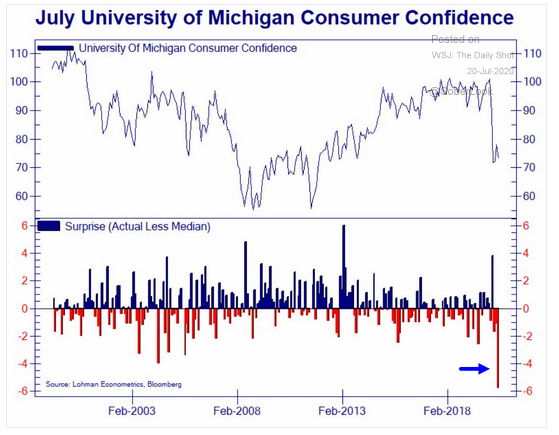
Source: WSJ Daily Shot, from 7/20/20
2. …As is the NY Fed’s survey of expected earnings…
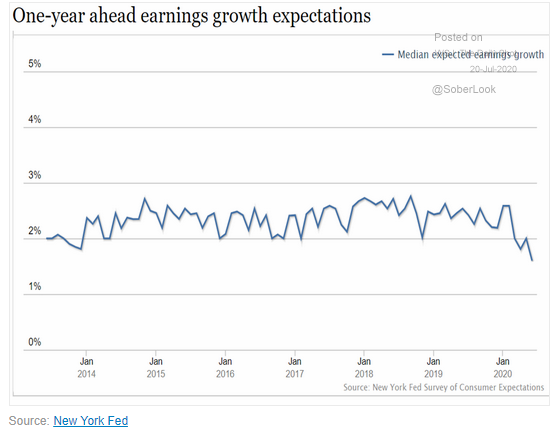
Source: WSJ Daily Shot, from 7/20/20
3. Now that U.S. interest rates have declined to paltry yield levels like the rest of the world, will the USD start to trade lower?
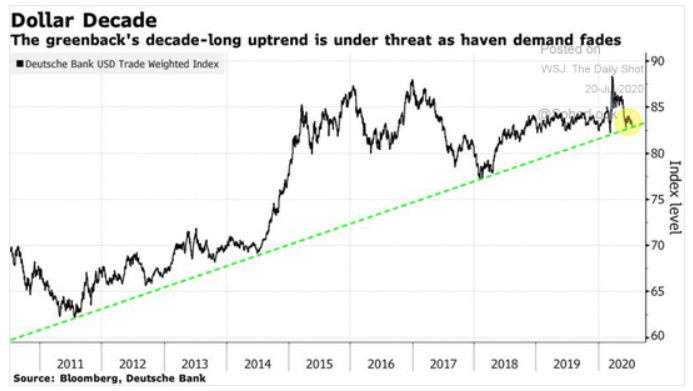
Source: WSJ Daily Shot, from 7/20/20
4. The cost of the Covid-19 fight is staggering…
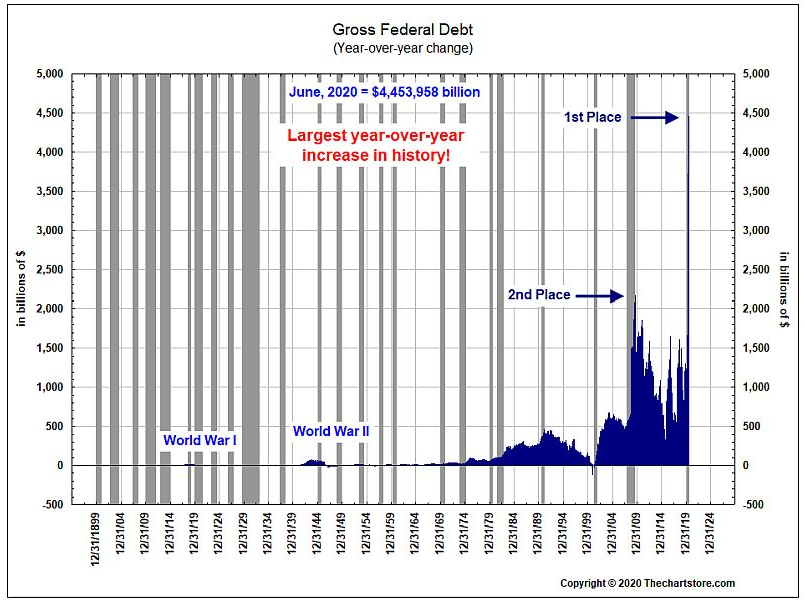
Source: The Chart Store, from 7/19/20
5. As a percent of GDP, U.S. debt is now at the same level as WWII…
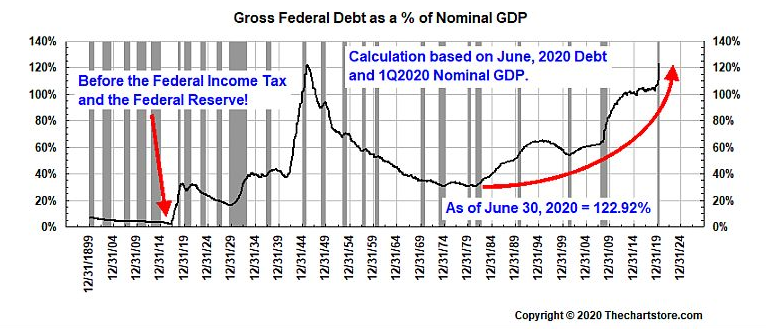
Source: The Chart Store, from 7/19/20
6. REITS, CMBS and Junk bonds have yet to “feel” the full effects of Covid costs…
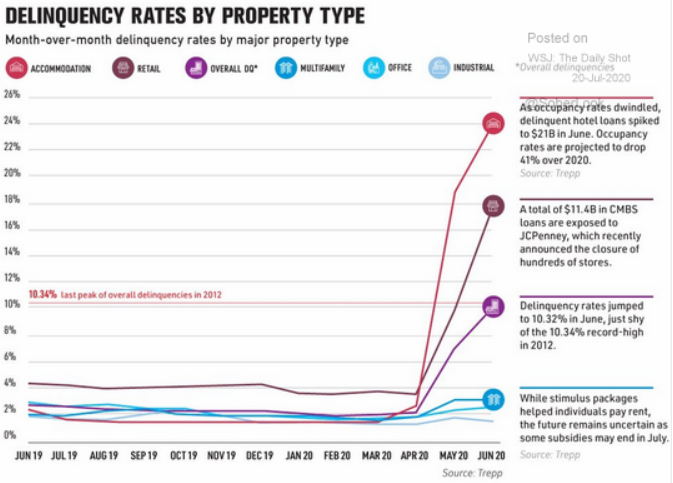
Source: WSJ Daily Shot, from 7/20/20
7. Central Banks have flooded the market with liquidity (money supply). Is this an even bigger “Don’t fight the Fed?” Will the global stock markets follow the M1 higher?
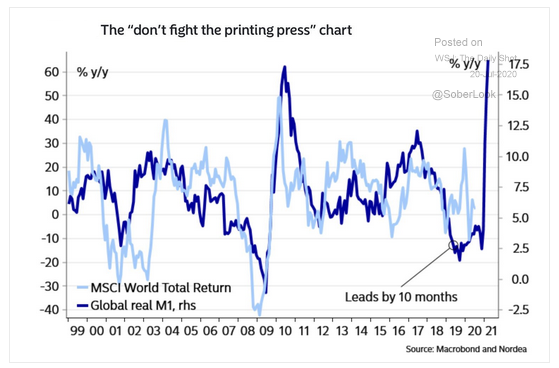
Source: WSJ Daily Shot, from 7/20/20
8. The surge in loans to cover Covid costs are being capitalized with new bond issues.
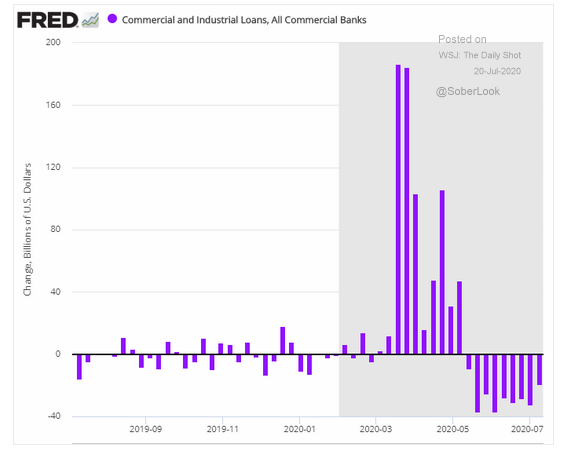
Source: WSJ Daily Shot, from 7/20/20
9. How big is big and what might burst these bubbles?
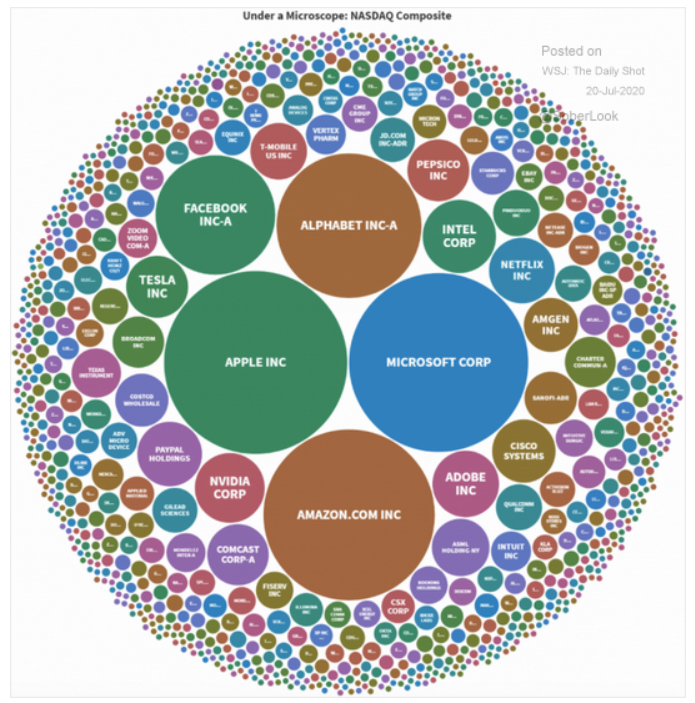
Source: WSJ Daily Shot, from 7/20/20










